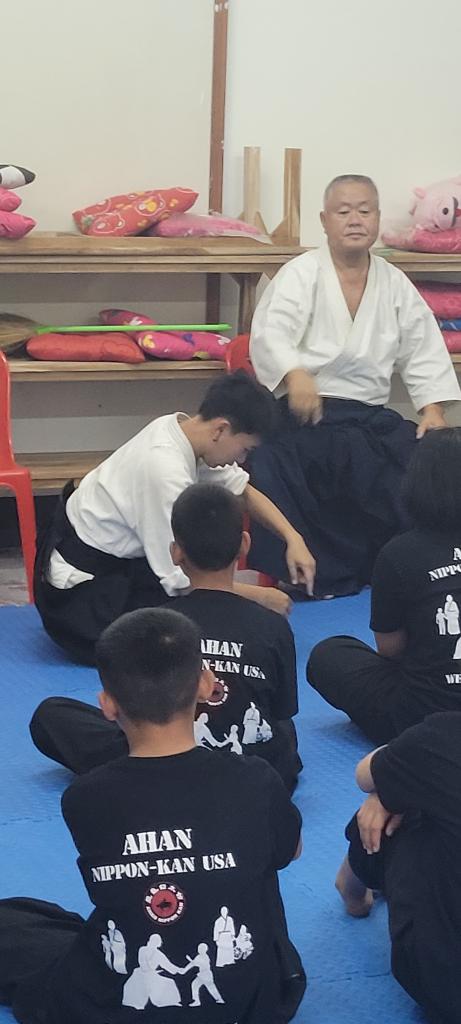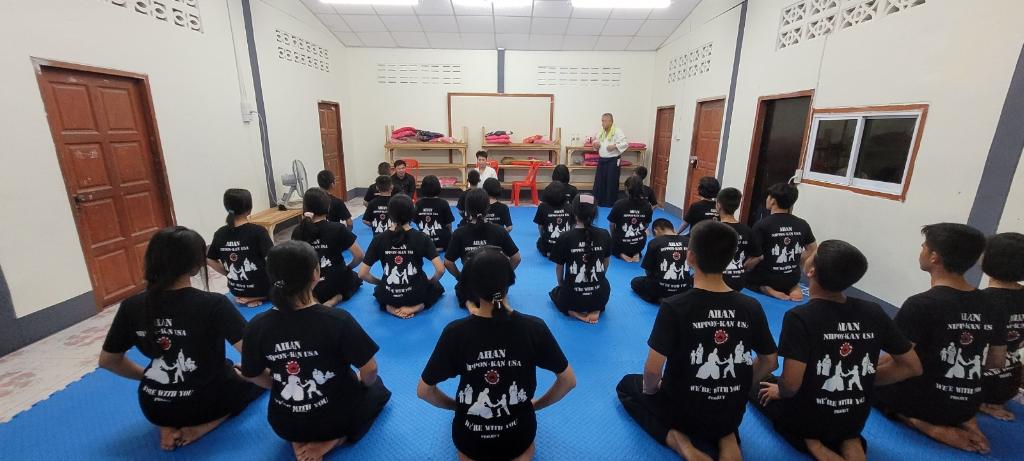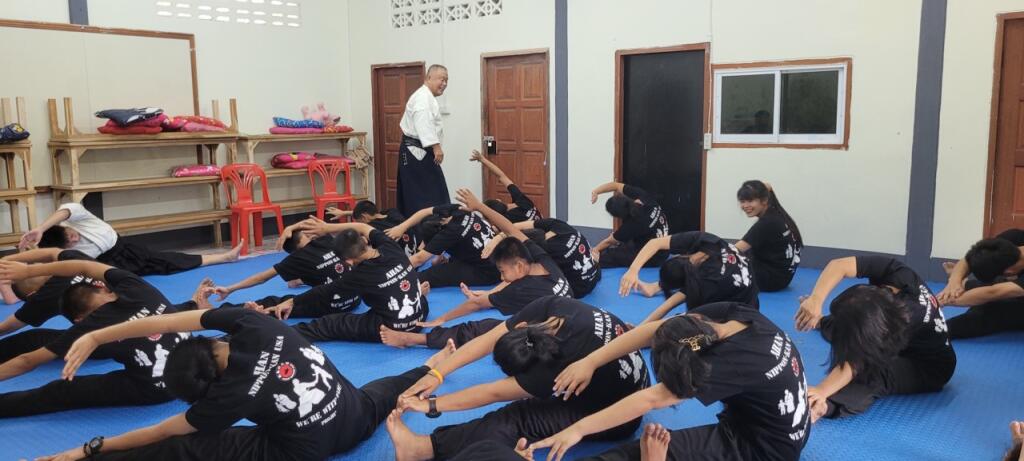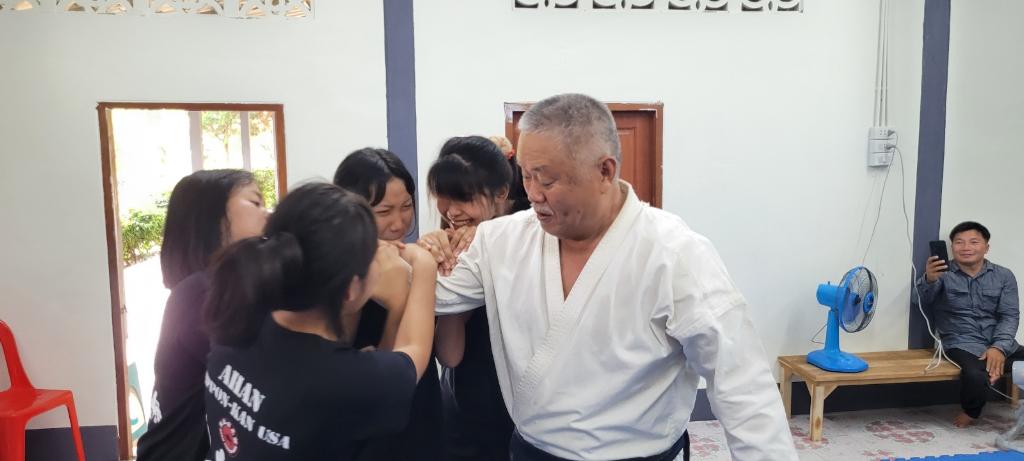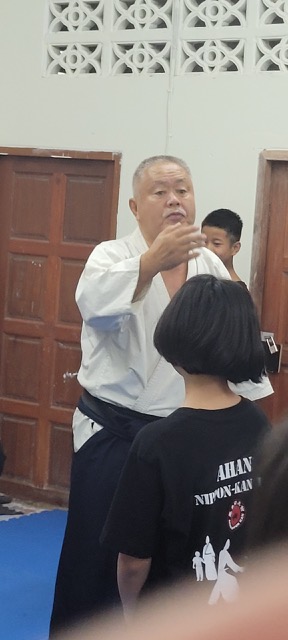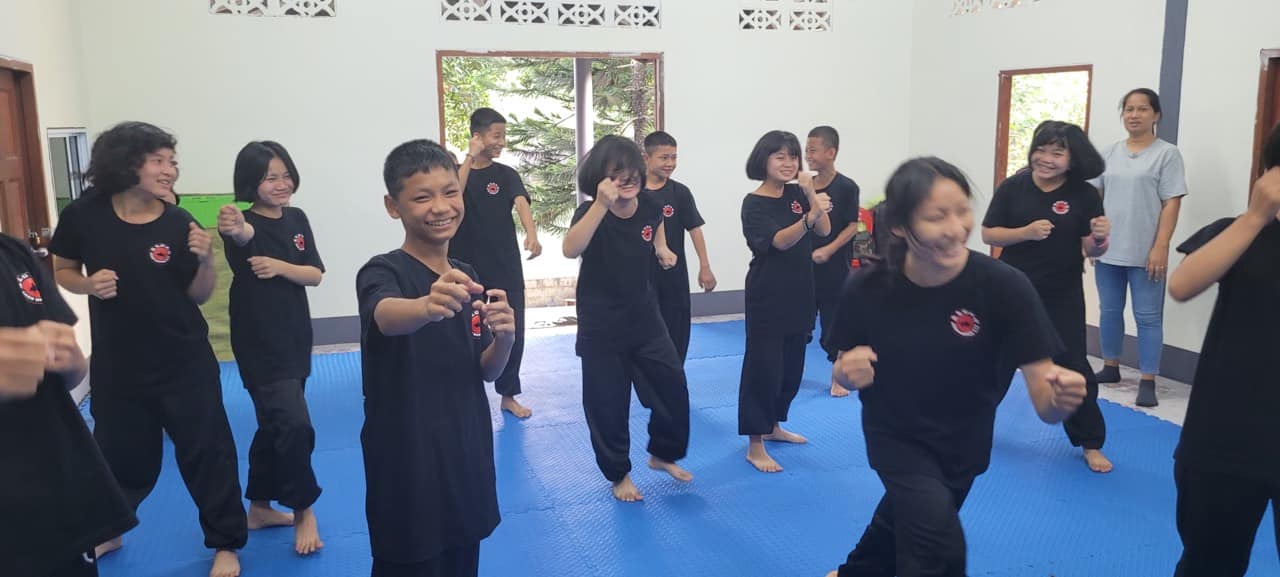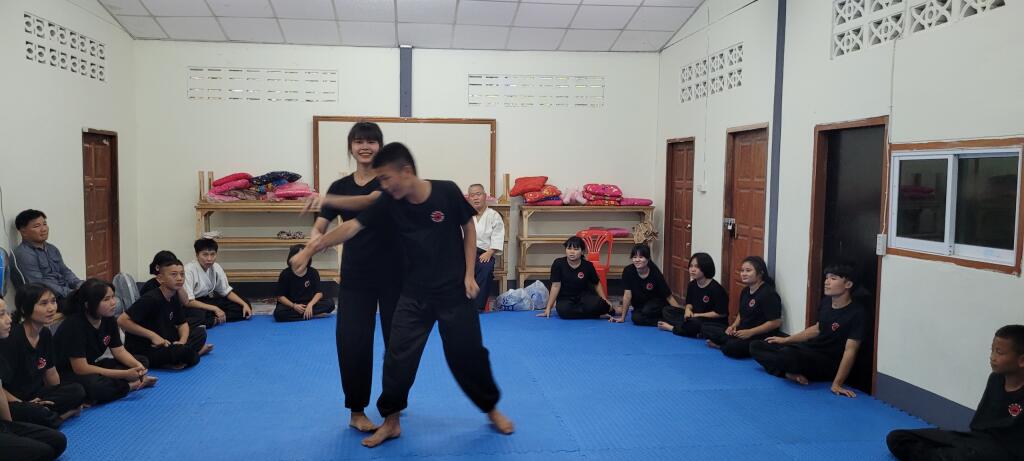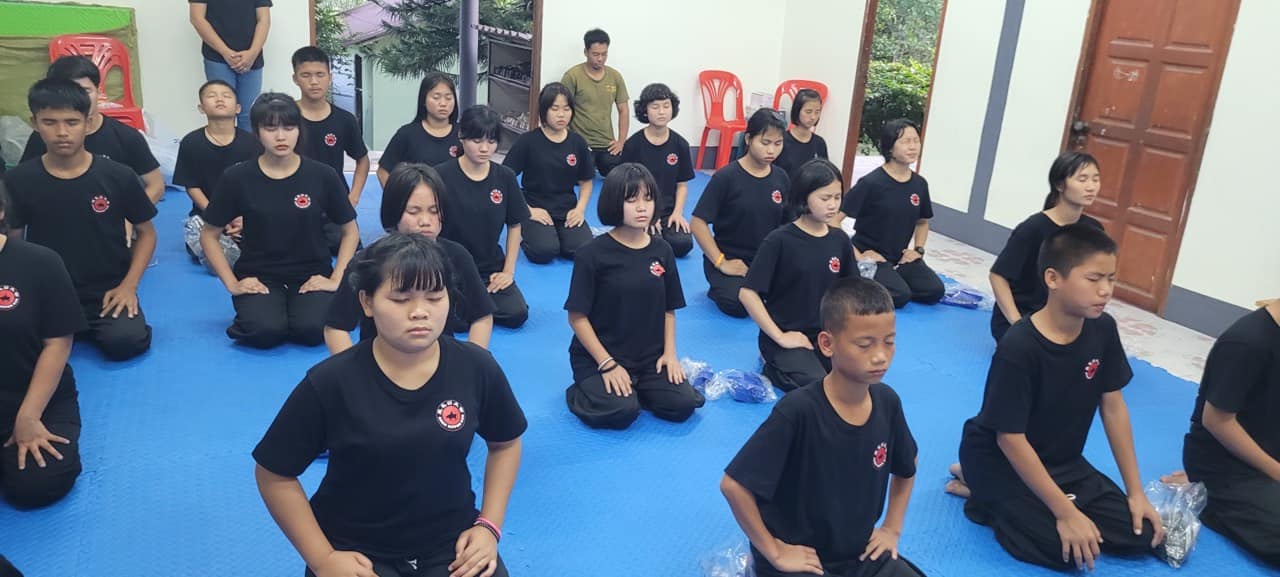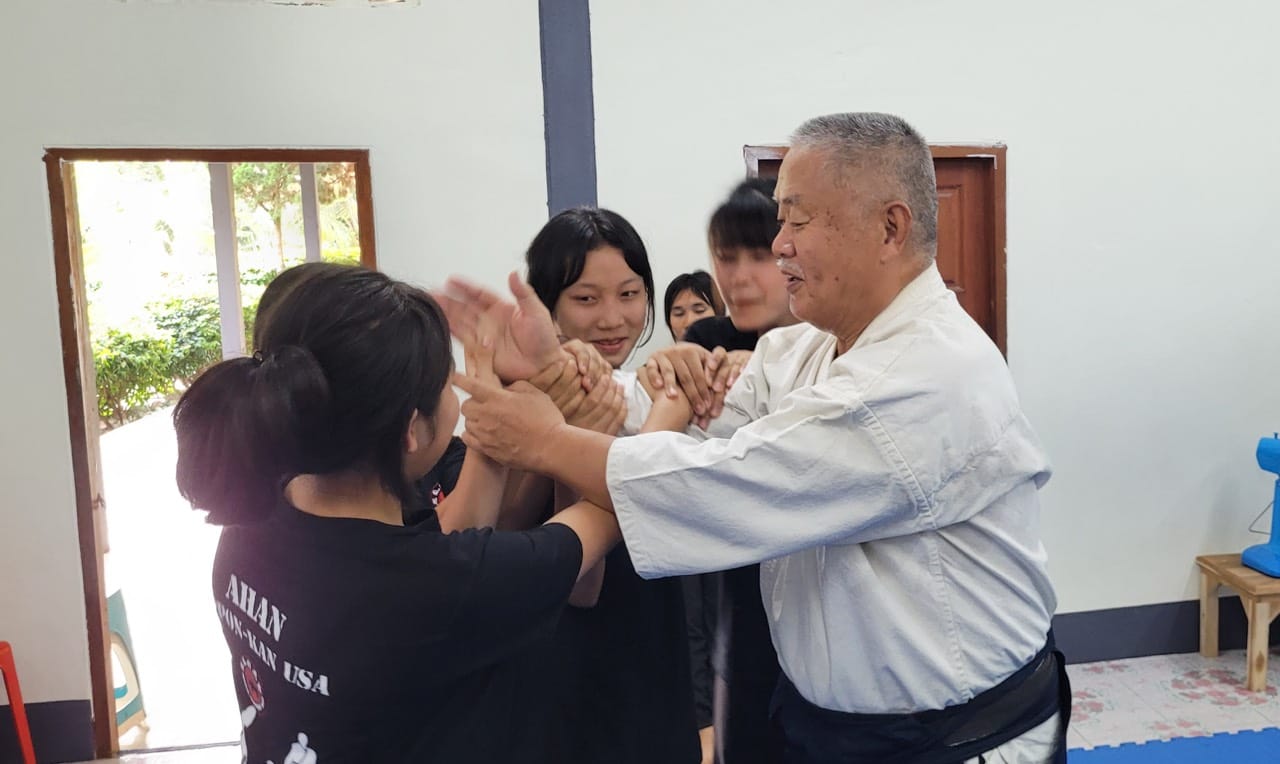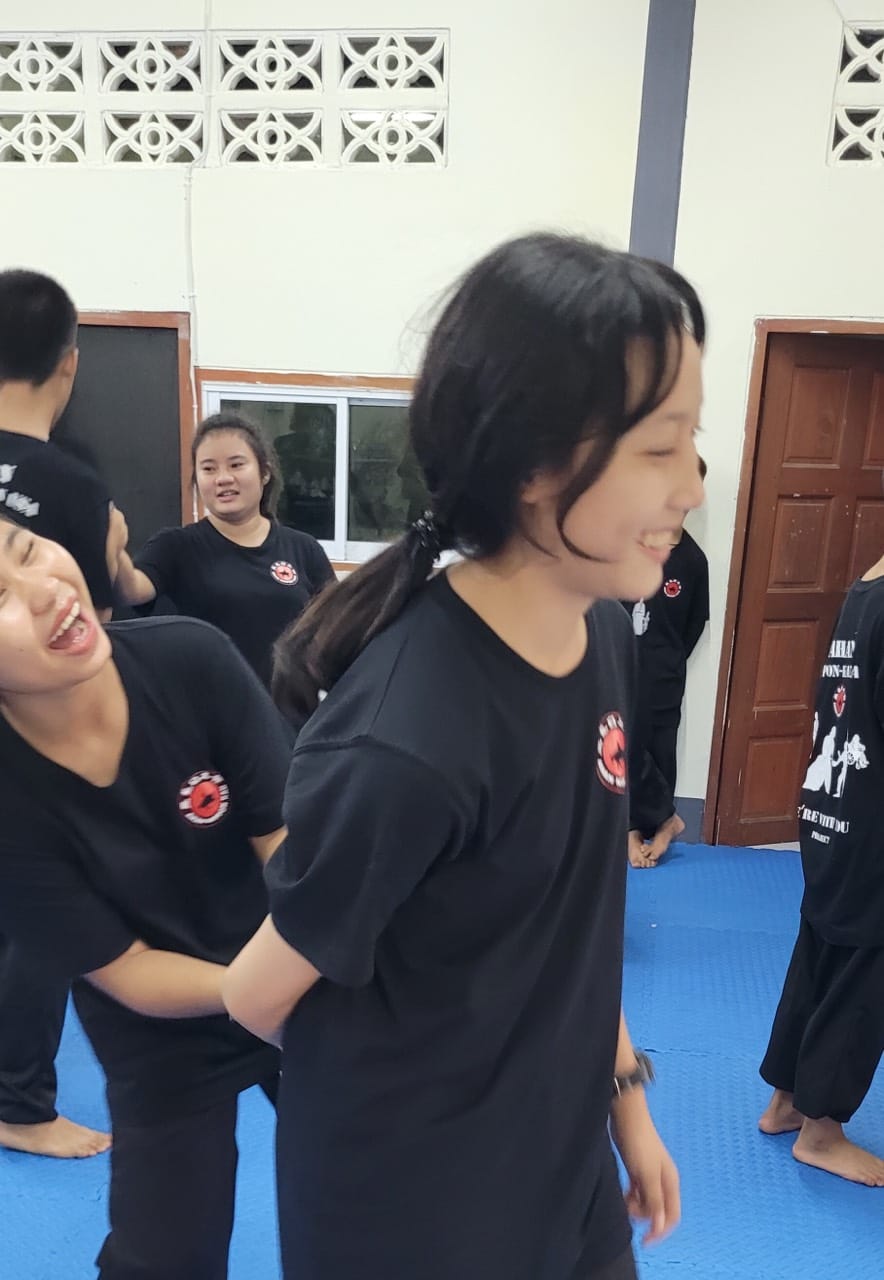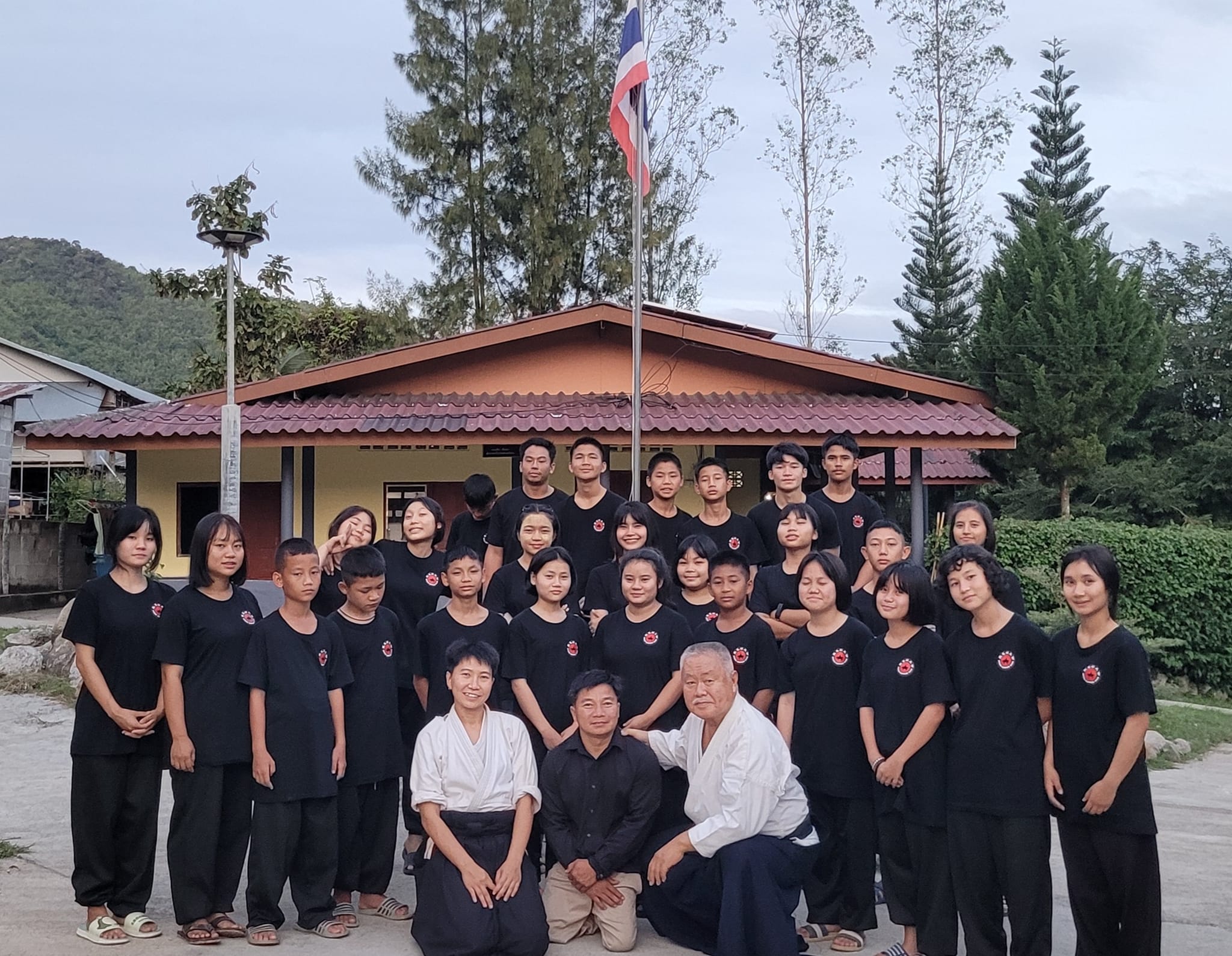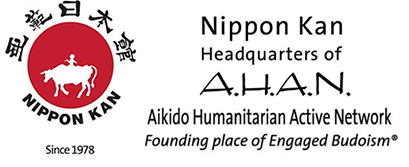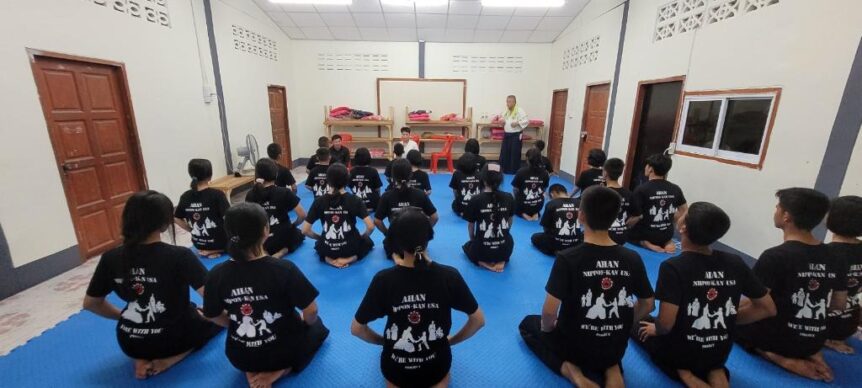On the 2nd day to teach a youth class during my visit to Bilay House in Thailand, I am reminding myself to get back to the basics.
This class is for youngsters and young adults aged 15 and up to 19, and I find it not so easy to teach a group of youths with such a wide age difference.
While I cannot help wonder whether it’s necessary to teach them “kotegaeshi” or “shihonage”, especially when they are living with so much energy (“genki”) at the facility every day, I also try to keep in mind the fact that while they are good and honest kids with so much energy, they are also carrying inside of them various and complicated thoughts and emotions from their past and that some of them may become prone to close themselves off emotionally while they may seem okay on the outside.
With this in mind, I have come to think what is needed for them is, rather than a chance to practice repetitiously different “waza (techniques)”, an opportunity for them to develop a positive mental attitude and self-confidence by learning how to behave politely, how to come together and stand down as a group, how to foster a sense of “kizuna (the enduring bonds)” with one another to work together with one another through practicing Aikido together.
Teaching a class for a group of youngsters and young adults with extraordinary life experiences has presented me with a totally different set of instructional themes, and it’s been a very eye-opening and fresh new experience for me.
I can see clearly that it’s been a stimulating experience for the youngsters and young adults at Bilay House to practice Aikido, and I see only positive outcomes out of this initiative.
I would like to express my sincere gratitude to Sombat Tapanya Sensei, who is not only an Aikido instructor but also a professor at Chiang Mai University, as well as Miss Siripown (Bee-san), who came to Bilay House for the 3rd time to help teach Aikido as a volunteer instructor.
Thank you to both of them for their volunteerism and benevolence.
